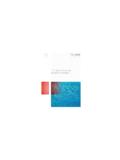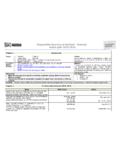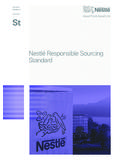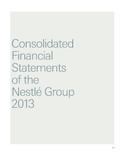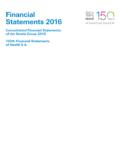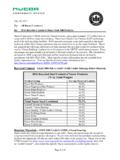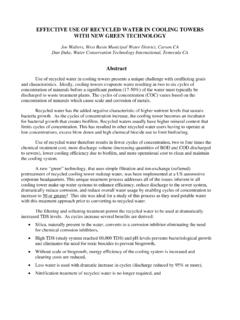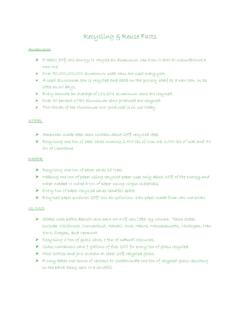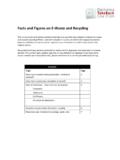Transcription of THE Facts About Bottled Water - Nestlé Global
1 Facts About Bottled WaterTHEF acts About nestl Waters CanadaTHE We have the only full-time hydro geologist in the Canadian beverage industry. This individual is responsible for the sustainable development of existing spring sources to ensure environmental and domestic receptors are protected. We are the world s largest producer of Bottled Water , but only use of the total fresh Water drawn worldwide. nestl Waters Canada s current permit in Aberfoyle, Ontario, is for 2,500 litres per minute. We are currently using About 60% of that. We draw less than of available permitted Water between April and September and About 1% between October and March from the Mill Creek sub watershed in Wellington County. Well less than of permitted Water for taking in the Grand River watershed, and less than of 1% of available Water from the Kawkawa Lake watershed in We have paid for the Water we draw in Ontario since 2009.
2 We will begin to pay for the Water we draw in British Columbia beginning in Supply If potable tap Water is available, we believe people should drink it. Bottled Water does not compete with tap Water . 91% of Bottled Water drinkers consume tap Water at home and Bottled Water on the go. 3 Maintaining Canada s municipal Water and sewer infrastructure is vitally important for all consumers, including nestl Waters Canada. nestl Waters and its employees support increased investment in this vital infrastructure by all levels of government so that each and every Canadian citizen has access to a safe and secure supply of tap Water . Bottled Water is simply not tap Water in a bottle. nestl Waters Canada uses underground sources on private property to produce its waters. According to a February 2014 AC Nielsen report, 95% of Canadian Bottled Water comes from spring Water sources on private vs BottleHealth & Wellness nestl Waters Canada and its industry partners fund a minimum of 50% of every municipal recycling program in Canada, whether curbside, depot/deposit or public 97% of Canadians have access to a municipal recycling nestl Waters Canada is committed to developing a next-generation bottle made entirely from recycled materials or renewable resources by 1 Stewardship Ontario, 2007.
3 2 Statistics Canada, Households and the Environment Survey, 2006. 3 Probe Research Inc. July 2012. 4 Grand River Conservation Authority and Nestle Waters North America John Challinor II, Director of Corporate Affairs, 1 888 565-1445, Ext. 6441 The origins of Bottled Water can be traced back to 10,000 , where early man used primitive vessels and skins to transport Water to their Water bottling and distribution business is one of the oldest forms of commerce in the to Euromonitor International, the international Bottled Water market is forecast to grow by 78% from 2012 to 2017 from 242, million litres to 311, million to Taiyou Reports, growth of international Bottled Water market is forecast to bestimulated by rising populations, consumer spending patterns, lifestyle trends and a growing level of health consciousness. Canadians have been purchasing spring Water in bottles made of glass, plastic and other materials for almost 100 years.
4 Facts About THE 1 Euromonitor International. Passport; Bottled Water in Canada, March 2013201220132014201520162017$70 billion by 2017 The Bottled Water IndustryJohn Challinor II, Director of Corporate Affairs, 1 888 565-1445, Ext. 6441 Facts About THEY early, Canadians discard about500 lbs of newsprint but only 20 lbs of plastic containers (including beverage, household and personal care products).5 In 2009, the Regional Municipality of Halton collected 46,590 tonnes of recyclables. Just 5% was plastic bottles and plastic a 2008 report by Leger Marketing, 96% of Canadian Bottled Water drinkers said they recycle their plastic bottles. Recycling plastic bottles into new products saves 50-60% of the energy that would be required to make the same The recovery rate in Canada for plastic beverage containers averages almost 70%2 According to Stewardship Ontario, plastic beverage containers, including plastic Water bottles, account for less than 1% of the total waste stream in Ontario and plastic Water bottles account for only 40% of that.
5 If the industry disappeared tomorrow, there would be no appreciable decreasein the volume of refuse going to beverage industry is committed to improving on its almost 70% DIVERSION RATE for beverage containers, including investing heavily to establish public spaces recycling programs spaces recycling involves the collection of recyclable materials items typically captured through deposit-refund and curbside recycling programs that are abandoned by consumers in public spaces such as sports parks, arenas, cultural facilities, streetscapes, transit stops, schools, gas stations and Water represents less than 1% of a consumer s overall environmental to other packaged beverages, Bottled Water has the lightest environmental footprint because it doesn t use grown ingredients such as sugar during production, and because the bottles use the least amount of A consumer can further reduce the bottle s carbon footprint by 25% by simply recycling Water bottles are the third most recycled product in are also the third most valuable item in a recycling program and, when recycled , are used to make playground equipment, automobile parts, carpeting, fleece clothing, sleeping bags, shoes, luggage, other plastic containers, Canadian Plastics Industry Association.
6 The Benefits of Plastic StewardEdge Consultants. July 2012. 3 Quantis International. Environmental Life Cycle Assessment of Drinking Water Alternatives and Consumer Beverage Consumption in North America. February 1 Quantis International. February Canadian Plastics Industry Association. The Benefits of Plastic Stewardship Ontario. Challinor II, Director of Corporate Affairs, 1 888 565-1445, Ext. 6441 Facts About THE AND CAN BE recycled OVER AND OVER AGAIN1 recycled PET is used to make a variety of everyday items everything from sweaters to sleeping bags to playground equipment making PET one of the most valuable recycled materials it is lightweight and durable, it is a very energy-efficient packaging material, which is why it s preferred for packaging many is hygienic, strong and safePET is the third most recycled product in Canada after newspapers and aluminumAny empty PET bottle is a resource not a waste Research shows that a reusable Water bottle will have to be used an average of 80 times before it has a carbon footprint lower than that of a single use assumes high efficiency dishwashers are used.
7 If the bottles are washed in a typical lower energy efficient domestic dishwasher, or are washed by hand, or are rinsed under hot running Water , then the carbon footprint of the reusable Water bottle, including washing, will be higher and could be greater than that of the single use bottle even after it has been reused hundreds of collected bottle is recycled into new bottles or other products. Its collection generates an environmental benefit by avoiding the production of virgin PET bottles are100% recyclable In 1980, a litre PET bottle weighed approximately 45 grams - today it weighs between 25 and 32 in technology continue to decrease the weight of PET containersPET s light weight reduces the amount of raw material needed to produce beverage containers compared to glass or metal and uses less energy to transport, and because it s durable, it requires relatively less packaging for content, plant based plastics and light weight all reduce PET s energy useIf all energy inputs (hydro, materials, etc.)
8 Are translated to oil equivalents, it would account for less than of the bottle s volume. Recycling preserves 86% of that energy content for use in other products and The National Association for PET Container Resources. US EPA. Solid Waste Management and Greenhouse Gases. 2002. All energy data based on percentages represent life-cycle energy savings of producing materials using recycled inputs compared with virgin inputs as a percentage of energy requirements using virgin CIAL Group, Colin Issacs. Lifecycle Carbon Footprint Analysis of Bottled Water . August 11, 2008. Page or Single use? PET BottlesPET does not contain BPA, phthalatesdioxins, docrine disruptors, lead or Challinor II, Director of Corporate Affairs, 1 888 565-1445, Ext. 6441 Facts About THE THERMAL POWER GENERATION ..63% MANUFACTURING ..15% MUNICIPALITIES.
9 AGRICULTURE .. MINING ..1% Bottled Water ..02%The Canadian Bottled Water industry uses just of permitted Water in earth s hydrologic cycle naturally replenishes our spring renewable supply falls from the sky, passing through lakes and rivers as it moves to the sea. Some goes underground, replenishing aquifers that can be tapped by one of the first signatories of the World Business Council for Sustainable Development pledge, nestl is committed to upholding the human right to Water and sanitation within its operations. As a result, over 300,000 beneficiaries are reached by Water , sanitation and hygiene projects around nestl manufacturing 2009, Ontario lost 25% of its tap Water to leaky infrastructureat a cost of $700 million ..that s enough to fill 131,000 Olympic-sized swimming The Canadian Bottled Water industry is an efficient user of its Water source.
10 About 97% of Water drawn by Bottled Water companies is 600 litres of Water to produce 20 litres of tap 3 litres of Water to produce 1 litre of soft drinks. 7 42 litres of Water to produce 1 litre of Water SupplyThe industry uses only litres of Water to make one litre of Bottled Water compared to other beverage industries which may use several litres of Water to make 1 litre of that 1 Residential and Civil Construction Alliance of Ontario Agriculture & Agri-food Canada. The Canadian Bottled Water Industry. 25 Mar 2009. 3 Environment Canada. John B. Sprague. Excerpt from Eau Canada by Karen Bakker. 2006. Page Nestle Waters North America. Professor Alexander Zehnder. Alberta Water Research K. Eschleman, Drinking Water Research Foundation, Coca-Cola Company and the Environmental Protection K. Eschleman, Drinking Water Research Foundation, Coca-Cola Company and the Environmental Protection are a number of initiatives Canadians can undertake to help preserve, protect and strengthen our Water systems.
